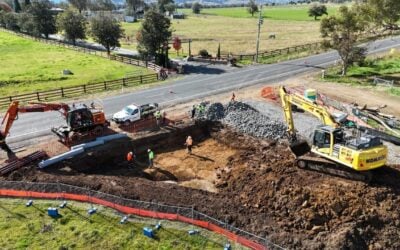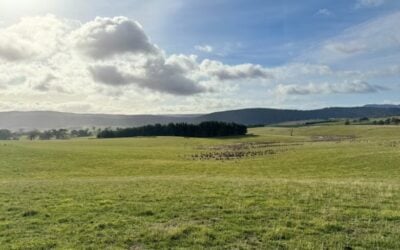Younicos hosted a groundbreaking ceremony for the project late last year. Image: Younicos.
An energy storage project aimed at enabling the grid integration of 1MW of solar and 4.5MW of wind on the Portuguese island of Graciosa will be supplied with batteries by Leclanché.
The Swiss manufacturer was named last week as a project partner by Younicos, the Berlin-headquartered energy storage and renewables integration specialist which last year provided software to Europe’s largest battery project, the fittingly named 6MWh Big Battery in Leighton Buzzard, England.
Enjoy 12 months of exclusive analysis
- Regular insight and analysis of the industry’s biggest developments
- In-depth interviews with the industry’s leading figures
- Annual digital subscription to the PV Tech Power journal
- Discounts on Solar Media’s portfolio of events, in-person and virtual
Younicos’ energy management software will pair with Leclanché’s lithium-ion batteries in a 2.8MW battery park on Graciosa, a tiny island in the northern Azores with a population of just 5,000. If all goes to plan the renewables-plus-storage system should stabilise the grid network and greatly reduce the need for thermal power generation and costly fuel imports to the island. In total, the system could allow the island’s population to boost the share of utilised renewable energy sources from 15% in the energy mix to 65% by the time the project is fully up and running.
A completion date for the project has not been made public, with Younicos stating only that it is sure of “substantial progress during the course of 2015”. Younicos has launched project operating company Graciolica, to which one of Leclanché’s biggest shareholders, Recharge ApS, has lent €3.5 million for the project.
The Portuguese island of Graciosa in the Azores. The new renewables-integrated energy management system could take the island from 15% renewable energy to 65%. Image: wikimedia user: Angrense.
Leclanché CEO Anil Srivastava spoke of his company’s excitement at working on the “truly innovative solution”.
“We are confident that our wide range of BESS (battery energy storage systems), seamlessly integrated with Younicos’ global leading Energy Management Software, will make this project a reference in the industry,” Srivastava said.
“We commend Recharge for its vision to invest in this ground-breaking project and are honored to work together to successfully carry out the renewable energy transformation on Graciosa.”
Philip Alexander Hiersemenzel, Younicos spokesman, told PV Tech Storage recently that his company had identified two key markets for its products and services - the first being grid-tied large-scale storage that allow Younicos to provide system services and add stability using storage, the other market being the off-grid, island project in the manner of the system on Graciosa. He also said that the execution of projects such as this one would be an increasingly important way to prove to financiers that energy storage can work outside simulation programs.
"The only way you can prove to financiers that what you’re doing is good is by actually building it. You can simulate all you want. We’ve got a simulator to form an island grid, as long as I have the load and the weather data. Of course that’s going to be very helpful to financiers, but at the end of the day the big part is always finance, it’s always the money- there’s enough money out there and they’re beginning to see that it’s interesting," Hiersemenzel said.
Grid integration of renewables is seen as both a pressing need and an immediate economic opportunity on many islands which, like Graciosa, are still heavily dependent on fossil fuel imports. As John Grimes of the Australian Solar Council wrote in a guest blog for PV Tech Storage last week, while not islands as such, the economics of adding renewables to off-grid systems in remote areas of Australia to replace diesel are already compelling enough that despite government reluctance to invest in renewables, projects are still going ahead in numbers. In other words, in energy islands and geographical islands, the comparative cost of energy is far more favourable to solar and other renewables against fossil fuels, particularly when combined with storage.
Similarly, while not completely off-grid, there have been numerous projects in other island territories such as Hawaii and Puerto Rico which are already facing the challenge of integrating high levels of renewable penetration. Puerto Rico has mandated that all new renewable energy projects come with a certain proportion of energy storage attached. Elsewhere, a project is underway on the French island territory of Réunion, off the coast of Madagascar by SAFT to add 9MWp of solar to 9MWh of large-scale batteries. Réunion, with a population of over 800,000 people, has a goal of going 100% renewable by 2030.






